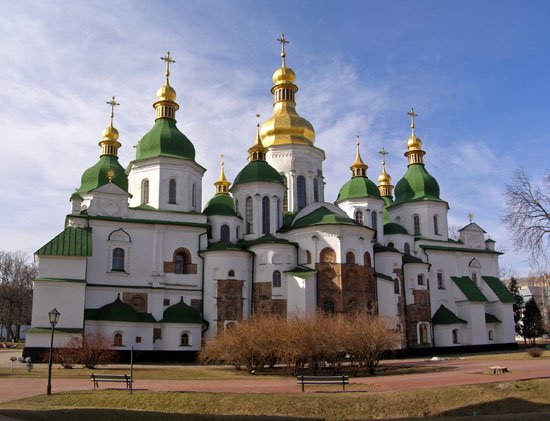As you, my readers, are aware, I havebeen using this article in several different ways to help you understand a little more about the faith and religion that we profess and practice. Some articles are about the feasts that we observe and others are more historical in content. I shared much about Eastern Christianity during the past months. Hopefully the information has been helpful to you in coming to a deeper understanding of our Church.
I have decided that I will now share some information about the Particular Eastern Church to which we belong, the Ukrainian Greek-Catholic Church.
According to Eusebius, a noted Church historian, St. Andrew preached the Gospel in Scythia, which included the Crimean Peninsula, the Dnieper River watershed and the area around Lake Ilmen.
In the 4th to 5th centuries, Lucius, a collector of apocryphal legends about Christians living in the 1st century, gathered stories about the preaching of Andrew and his disciples Alexander, Rufus and Filomen on the north-eastern shores of the Black Sea and the Sea of Azov.
The first apostles proselytized in the provinces of the Roman Empire, from the western shores of the Black, Sea all the way to Korsum on the Crimean Peninsula. The eastern parts of the Black Sea constituted the Bosporus kingdom and were under the protectorate of Rome. Scythia (Sarmatia) stretched to the north of the Black Sea. The city of Korsun and the Western part of the Crimea were places to which the Roman authorities exiled the first Christians, who often suffered martyrdom there.
The fourth pope, Clement (circa 92-101), the Roman patrician Domitilla, as well as several hundred Christians were exiled to Korsum by Emperor Trajan (53-117). According to the histories of Origen and Eusebius, Clement was exiled because he had converted several very prominent Romans. In Korsum, Pope Clement converted all the people and founded 75 Christian communities and became the prelate of the Korsum Eparchy.
He suffered a martyr’s death in Korsum in the Crimea. Because of his missionary work, the Emperor Trajan ordered Clement to be executed and his body thrown into the sea.
A 12th century work describes how Clement’s body was weighed down with a heavy anchor and thrown into the sea. His disciples’ prayers caused a parting of the waters, opening a path to his body, which lay in a beautiful underwater church. Ever since then, on the anniversary of his death the sea would part for a few days so that the pilgrims might revere his relics.
In 988 Volodymyr the Great brought some of Clement’s relics to Kiev where he was proclaimed the patron saint of the Church of the Tithes of the Mother of God.

